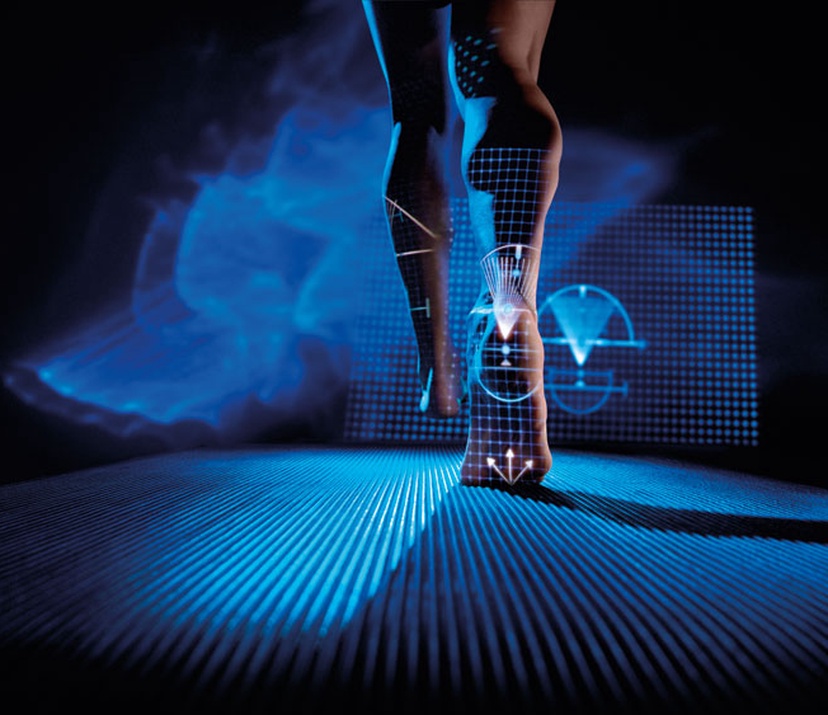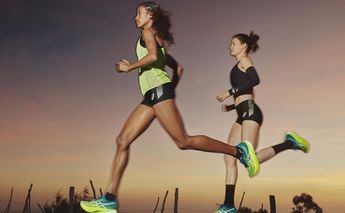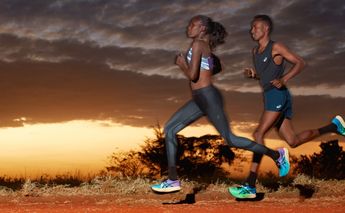Learn about the movement of your feet when you run. You have probably never analysed your own running in this way, but you can break down one complete step into several component movements or phases. Together this is called the gait cycle.
It describes how humans walk and run – in other words, how we move. Having an idea of the gait cycle helps to make sure you are choosing the correct running shoes. It also also helps to understand pronation patterns, which are described in detail in Understanding Pronation.
Stance & Swing
A complete gait cycle begins when one foot makes contact with the ground and ends when that same foot makes contact with the ground again. It is made up of two phases:
- Stance phase, during which (part of) the foot touches the ground;
- Swing phase, during which that same foot doesn't touch the ground.
Stance is considered the most important phase, because this is when the foot and leg bear your body weight. The stance phase can in turn be divided into three stages:
- Initial Contact;
- Midstance;
- Propulsion.
Let's take a closer look at each of these gait cycle phases. Watch the right leg move through the gait cycle in the animation below.
1. Stance Phase: Initial Contact
Initial contact is when your foot lands on the ground. It is the cushioning phase of the gait cycle. The knee flexes just before the foot hits the ground and the foot pronates (rolls in). This causes the foot and leg to act together as shock absorbers. The foot needs to be quite mobile at this time to allow for any unevenness in the terrain.
The initial contact phase begins when the foot makes contact with the ground, usually heel first. It ends when the forefoot makes contact with the running surface. This moment is called 'foot flat' and it marks the beginning of the midstance phase.
2. Stance Phase: Midstance
During midstance the foot and leg provide a stable platform for the body weight to pass over. By now the foot should have stopped pronating. If the foot is still pronating at this time there is too much movement and instability.
Also called single support phase, midstance is when the other foot is in swing phase, so all the body weight is borne by a single leg. This also means that the lower limb is particularly susceptible to injury.
The weight of the body has a flattening effect on the arch of the foot. However, our feet are specifically adapted to resist excessive arch flattening. Most important in supporting the foot is the plantar fascia , the connective tissue which stretches across the arch of the foot.
3. Stance Phase: Propulsion
Propulsion is the final stage of the stance phase. It begins immediately as the heel lifts off the ground. As the big toe turns upwards (dorsiflexes ) the windlass mechanism comes into play, tightening the plantar fascia and helping to raise the arch of the foot. This mechanism is very important since it allows the foot to act as an efficient lever.
During propulsion the foot should be supinated (rotated outwards), allowing the bones of the midfoot to brace against each other and producing a rigid structure capable of propelling the body weight forwards. If the windlass mechanism is either delayed, as with an abnormally pronating foot, or impeded by poorly designed footwear, the foot will not function properly during the late midstance and propulsive phases of gait. This results in an increased risk of injury.
4. Swing Phase
The swing phase begins with 'toe off' and ends just before the foot makes contact with the ground again and a new gait cycle starts. This phase is important to set the foot and leg up in preparation for heel contact and the next stance phase.



